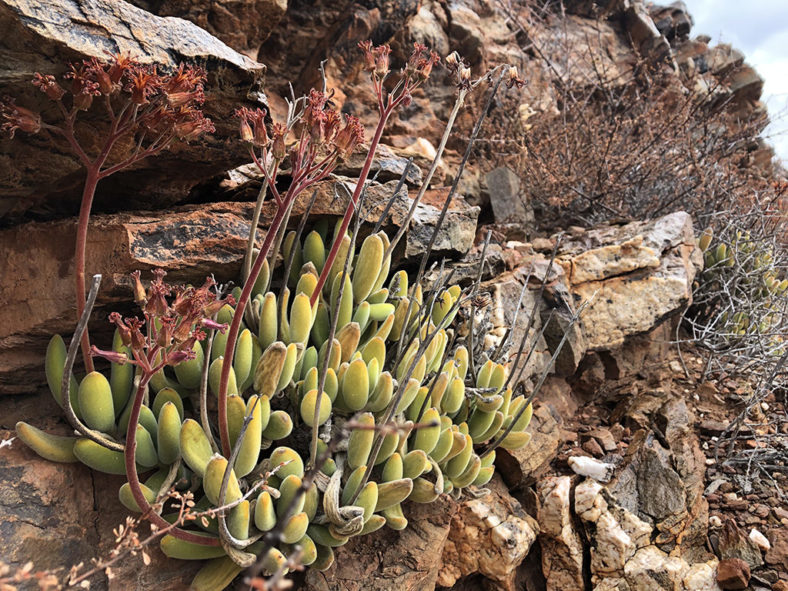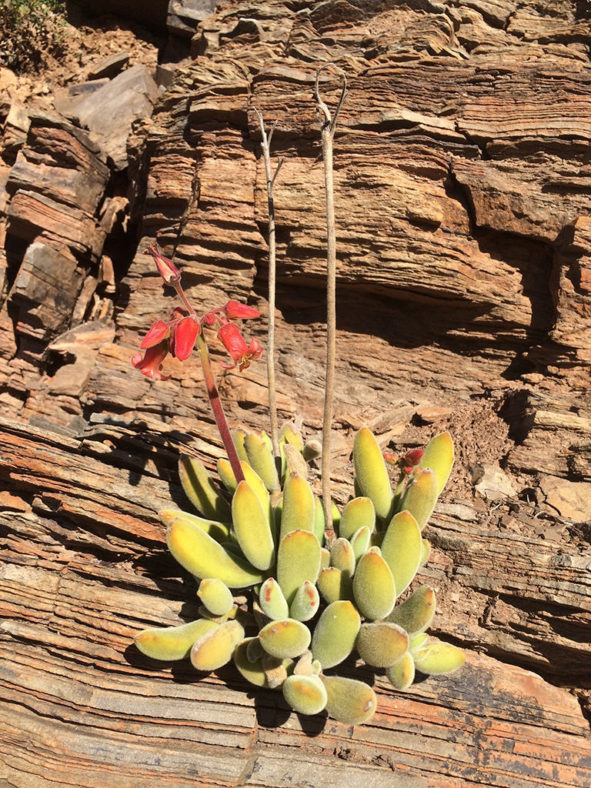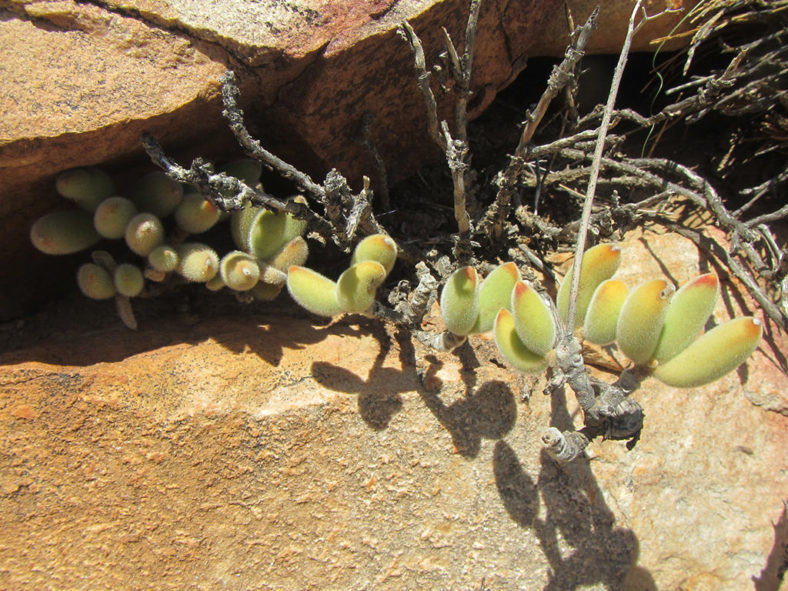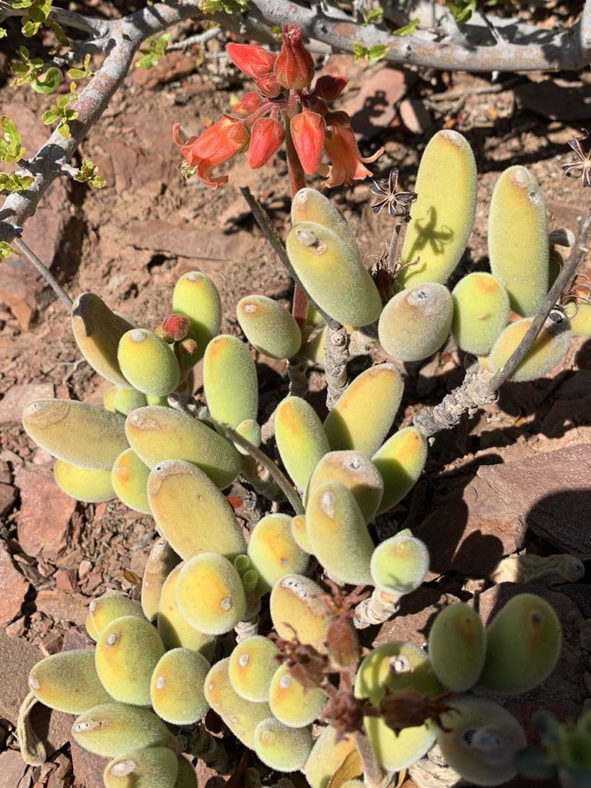Scientific Name
Cotyledon tomentosa subsp. ladismithiensis (Poelln.) Toelken
Common Name(s)
Bear's Paw
Synonym(s)
Cotyledon ladismithiensis, Cotyledon ladysmithensis, Cotyledon heterophylla, Cotyledon tomentosa subsp. ladysmithiensis
Scientific Classification
Family: Crassulaceae
Subfamily: Kalanchoideae
Genus: Cotyledon
Etymology
The subspecific epithet "ladismithiensis" (pronounced "lad-ee-SMITH-ee-EN-sis") means "of or from Ladismith" and refers to the type locality of this subspecies, which is south of Ladismith in South Africa's Western Cape province.
Origin
Cotyledon tomentosa subsp. ladismithiensis is native to South Africa. It grows on lower gravelly slopes in sheltered ravines in Ladismith and surrounding areas in the Little Karoo region in Western Cape, from Calitzdorp to Ladismith and from Laingsburg to Warmwaterberg and Muiskraalkop.
Description
Cotyledon tomentosa subsp. ladismithiensis is a succulent shrublet with hairy, branched, spreading branches and plump, fuzzy, slightly flattened to almost cylindrical leaves that are variable in hairiness and have only 1 to 3 teeth. It can grow up to 12 inches (30cm) tall and is usually less branched than Cotyledon tomentosa subsp. tomentosa. The lower branches are rigid with brown peeling bark. The leaves can measure up to 3.2 inches (8 cm) long and 1 inch (2.5 cm) in diameter. While more teeth may be present on the leaves initially, they tend to disappear as the leaves mature.
The flowers are bell-shaped to urn-shaped with five fused petals, orange to reddish, and appear in clusters on up to 6 inches (15 cm) tall stalks in winter and spring.

Hardiness
USDA hardiness zones 9b to 11b: from 25°F (-3.9°C) to 50°F (10°C).
How to Grow and Care
Bear's Paw grows in bright, shaded areas where it rarely receives direct sunlight. Outdoors, plant it in slightly sandy, well-drained soil where water doesn't collect after rain or irrigation. Potted plants require a container with at least one bottom drainage hole. When planting Bear's Paw in containers, select pots only slightly larger than the root system.
Regular deep watering in the summer, when the plant is actively growing, keeps the Bear's Paw healthy. Water garden plants deeply once weekly when there is no rainfall, supplying about 1 inch (2.5 cm) of water. Potted plants require watering when the soil has almost completely dried. Thoroughly drench the soil until the water drains from the bottom hole in the pot, and empty the collected water after draining the pot. Bear's Paw only requires enough water in winter, so the soil doesn't dry completely, and the plants don't shrivel.
Light fertilizing twice monthly is only necessary during the active summer growing season. An all-purpose, water-soluble fertilizer, such as a 24-8-16 blend, works well for succulent plants.
Learn more at How to Grow and Care for Cotyledon.
Links
- Back to genus Cotyledon
- Succupedia: Browse succulents by Scientific Name, Common Name, Genus, Family, USDA Hardiness Zone, Origin, or cacti by Genus
Photo Gallery
Click on a photo to see a larger version.


